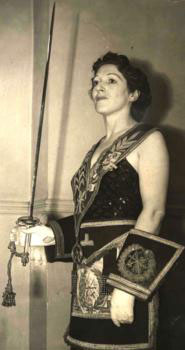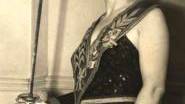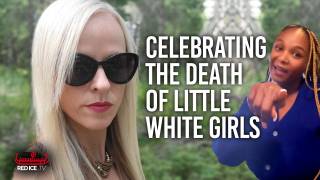Freemasonry celebrates its many female brethren
Source: timesonline.co.uk
Picked up from: aftermathnews.wordpress.com Time was when the only way that women could become freemasons was for them to eavesdrop on the doings of this all-male preserve. But as Lady Elizabeth St Leger of Co Cork found out when she got caught in the act in 1732, this could be a high-risk strategy. As the rulebook of 1717 firmly states: “No Bondmen [ie, slaves], no Women, no immoral or scandalous Men” can ever join the brethren.
Time was when the only way that women could become freemasons was for them to eavesdrop on the doings of this all-male preserve. But as Lady Elizabeth St Leger of Co Cork found out when she got caught in the act in 1732, this could be a high-risk strategy. As the rulebook of 1717 firmly states: “No Bondmen [ie, slaves], no Women, no immoral or scandalous Men” can ever join the brethren.For two days, the story goes, Lodge 44 held Lady Elizabeth under lock and key while they debated what to do with her. Eventually they offered her a stark choice: death or full initiation. For generations Lady Elizabeth remained the only recorded female mason. But who knows how many ladies never lived to tell their tale?
Times have changed. Exactly 100 years ago a group of suffragettes led by Annie Besant and Lady Lutyens, wife of the architect Sir Edwin, burst into this all-male preserve by setting up the first lodge for both men and women. This didn't last long because of objections from the all-male lodges. But the women persevered, setting up their own lodges.
Now not only are there an estimated 20,000 women freemasons in Britain alone, but their male counterparts in the United Grand Lodge of England have decided to give the ladies a pat on the back by celebrating their centenary year with a special exhibition at their headquarters in Covent Garden, starting on June 4. It will be the first British exhibition on women and their involvement with freemasonry.
But don't believe for a moment that freemasonry is turning unisex. Women's lodges remain separate from men's lodges, apart from the occasional social evening or lecture.
And don't expect the exhibition to reveal any arcane secrets. As Dr Iris Monica Oktabsova, past deputy grand master of one of the oldest branches, Lodge Equity 16, says: “Although we are not a secret society, we are a society with secrets.” No tips on secret handshakes, then. No clues as to what the “craft” actually entails.
Instead, the show will mainly include examples of their regalia, as well as paper records, such as that first rule book; as well as images of early women “brethren” as they refer to themselves, and theosophical tracts which inspired their early members. By the time they leave, visitors will also be fully appraised of the three main cornerstones of freemasonry. They are the grand principles of brotherly love (the requirement to behave “with kindness and understanding towards all”); relief (to undertake charitable works) and truth (to show integrity both private and public). Last but not least they must have a fundamental belief in a supreme being or God.
The Order of Women Freemasons itself will celebrate its own centenary on June 7 with a grand gathering of 5,000 members and guests at the Royal Albert Hall during which there will be processions, hymn singing and dance.
Article from: http://www.timesonline.co.uk/tol/life_and
_style/court_and_social/article3620126.ece






















